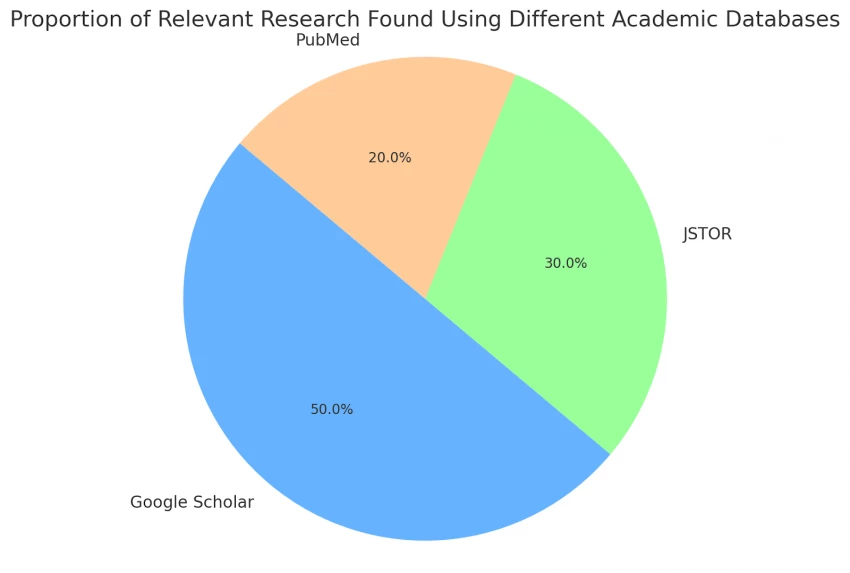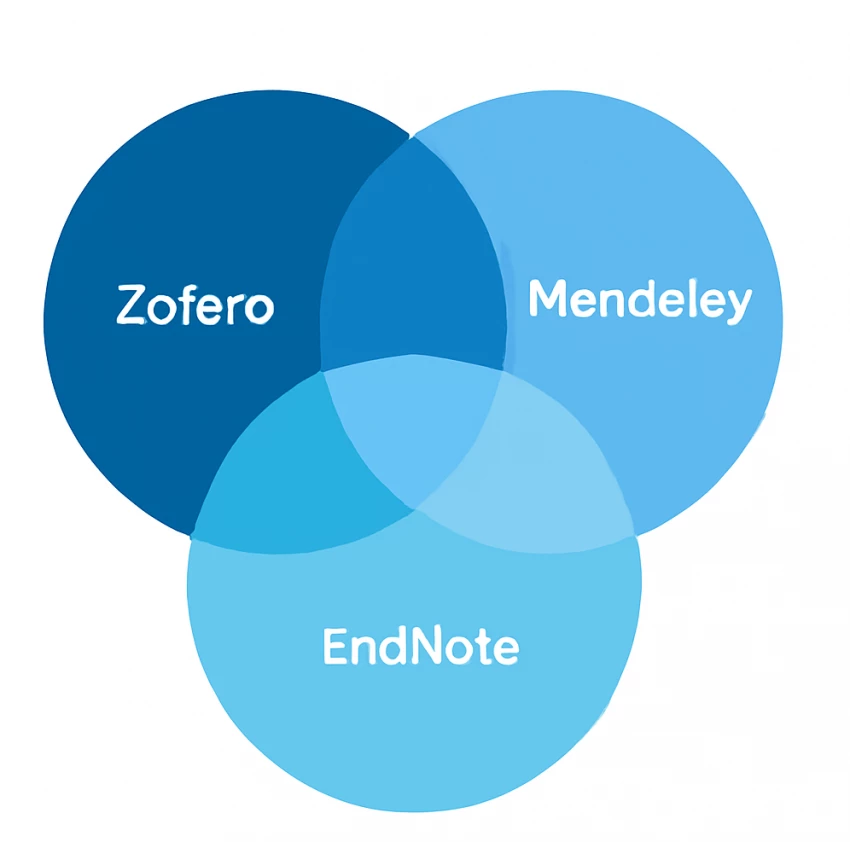

Writing a literature review can feel overwhelming, especially if you’ve never tackled one before. I remember my first experience—it was like staring at a mountain of articles and thinking, “Where do I even begin?”
But don’t worry, I’m here to tell you that it doesn’t have to be this stressful. By breaking the task down step by step, it becomes manageable. This guide is going to show you how to solve the challenges that come with writing a literature review, so you can get started without feeling lost. Ready to dive in?
A literature review is more than just a collection of summaries of existing research. It’s your intellectual foundation for the research you’re about to conduct. Think of it as a way to show how your study fits into the bigger picture. You review what's already been done, figure out where there are gaps, and identify what new contributions you can make.
It’s like having a blueprint before you start building your house—you need to understand the landscape first. So, before you get buried in research papers, make sure you understand the purpose and importance of this review.
One of the most common mistakes is having a vague research question. Trust me, a broad question like “What is climate change?” will leave you overwhelmed with literature. You need to narrow it down and make it specific. For example, instead of asking, “What is climate change?” focus on “How does climate change impact urban heat islands in coastal cities?”
The key is to get focused early so that when you start your literature search, you have a clear direction. This will save you a lot of time and frustration later on. Now that you have a clear research question, you’re ready to begin the literature search.
At this point, you’re probably thinking, “Great, I have my question. But how do I find all the relevant studies?” I’ve been there, trust me—there’s no shortage of research out there, and it can feel like you're drowning in information. But here's the secret: be strategic.
Start by searching through academic databases like Google Scholar, PubMed, JSTOR, and more. Use keywords that are specific to your topic, and narrow your search with Boolean operators (AND, OR, NOT). This will help you filter out irrelevant results and focus on what really matters.

Once you’ve gathered your sources, it’s time to organize them effectively, and that leads us to the next essential step: organizing your sources.
You’ve got your sources—now what? Don’t fall into the trap of throwing all your articles into one big pile. Organization is key. Use tools like Zotero, Mendeley, or EndNote to categorize and manage your papers. These tools allow you to tag articles with keywords (e.g., "urban heat islands," "climate change impacts") and even generate citations automatically.
This organization makes it easy to access relevant studies quickly when you need to refer to them later. It also helps you identify themes or gaps as you start synthesizing the information. Once your sources are organized, let’s take a deeper dive into critically reading these sources.
Reading through your sources isn’t just about summarizing what’s in the abstract. You need to evaluate them. When you read an article, ask yourself:
When I first started, I would read an article and think, “Okay, that sounds good,” but that’s not enough. You need to understand the research fully and assess its quality. This is the critical reading step that ensures your review isn’t just a list of facts, but a meaningful analysis of the existing literature.
Now that you've critically read your sources, let's move into the next crucial step: synthesizing them into something coherent.
It’s easy to fall into the trap of simply summarizing each article you read, but that’s not what a literature review is about. A synthesis means connecting the dots between studies. You need to compare the findings, look at trends, and evaluate the implications of each study.
For example, if one study shows that climate change increases heat in urban areas, and another study suggests the opposite, don’t just list them. Ask why they differ. Is it a methodological issue? A different geographical area? This type of analysis—synthesis—is what gives your literature review depth and shows you’re engaging critically with the research.
Now that we know how to synthesize, let’s talk about how to organize all this information in a structured way so it’s easy to understand.
Here’s a big one I almost missed: contradictory research. Don’t ignore studies that disagree with your point of view or that show different results. In fact, addressing contradictions actually strengthens your review.
For example, if one study found climate change increases urban heat islands, but another found no significant link, don’t just ignore the second study. Discuss it! Maybe their sample size was too small, or maybe their data was taken from a different region. By acknowledging contradictions, you show that you’ve thought critically about the literature and that your research is necessary to explore these differences further.
Now that we’ve tackled contradictions, let’s take a look at how to organize your literature review in a logical way.
I found that the best way to keep my literature review organized was to follow a clear structure. Here’s a template that works for me:
With a clear structure like this, you’ll avoid your review feeling disjointed and ensure your argument is coherent.
Now that your review is coming together, how do you make sense of all the studies you’ve read? Here’s the thing: you don’t just summarize each paper. Instead, you compare studies, highlight patterns, and make sense of the information in relation to your research question.
I personally like to group studies by theme or methodology (e.g., studies on climate change impacts in urban areas vs. rural). This lets me see what areas are well-researched and where there’s still a gap.
Once you have everything synthesized, it’s time to fill in those gaps with your own research question—and that leads us into identifying the future research directions.
By now, you should be able to see where the gaps are in the existing literature. This is crucial because it will help shape your own research project. Maybe studies haven’t looked at the specific region you’re interested in, or perhaps there’s been limited research on urban vs. rural impacts.
Your task is to identify these gaps and use them as a foundation for your research questions. This not only makes your literature review valuable but also positions your research as necessary in filling those gaps.
Citing sources properly can feel like a chore, but it’s an absolute must. Proper citation makes your review credible and shows respect for other researchers’ work.

I recommend using tools like Zotero, EndNote, or Mendeley to manage your citations. These tools can even automatically generate your bibliography, saving you time.
Once you’ve written your literature review, don’t just hit submit. Take some time to revise and refine your work. Read it through and make sure it flows logically. Check that each study is tied back to your research question and critically evaluated.
I’ve made plenty of mistakes in my own literature review journey, so here’s a quick list of pitfalls to avoid:
The right tools can make a huge difference.
| Tool | Pros | Cons | Use in Literature Review |
| Zotero | - Organizes and manages citations efficiently - Supports multiple citation styles - Generates bibliographies automatically | - Requires manual input for some references - Can be slow with large libraries | - Ideal for citation management and organizing references - Keeps your sources in one place |
| Scrivener | - Helps organize long documents - Provides structure and templates - Easy to use for writing drafts | - Not specifically designed for citation management - Limited collaboration features | - Great for writing and structuring drafts - Helps break down the writing process into manageable parts |
| Grammarly | - Checks grammar, punctuation, and style - Helps improve clarity and readability - Real-time feedback | - Cannot replace in-depth editing - May not catch every error, especially in complex sentences | - Essential for proofreading and improving clarity - Ensures readability and consistency |
These tools are game-changers when it comes to managing and streamlining your work.
Length depends on the type of research you’re doing. For research papers, aim for about 15–30% of your total word count. For dissertations or theses, it could be 30–50 pages. The key is to be comprehensive without being overly detailed.
Now that your review is complete, it should inform your research methodology and help you define your research question and hypothesis. The review will serve as your foundation, guiding the direction of your own study.
Don’t rush your revision. After your first draft, go over your review with fresh eyes. Check for clarity and ensure you’re presenting a coherent argument. This is the final step before you submit.
Seeing examples of well-executed literature reviews can be incredibly helpful. I’ll share some real-life examples that helped me shape my own review, showing how a strong literature review builds a credible foundation for the entire research project.
Here’s a quick recap of the steps to tackle your literature review efficiently:
So, there you have it! Writing a literature review doesn’t have to feel like an insurmountable task. Sure, it’s a lot of work, but you can absolutely do it with a little organization and strategy. As I mentioned earlier, I’ve been there—feeling overwhelmed by stacks of papers and trying to piece them together into something meaningful. But once I broke the process into manageable chunks, it became much more approachable.
Remember, the goal of your literature review is not just to summarize, but to show that you have a deep understanding of your topic. You’re the one who connects the dots between studies, identifies the gaps in existing research, and sets the stage for your own contribution.
So, take a deep breath, gather your materials, and dive in with confidence. You’ve got the roadmap, now it’s time to make it your own!
Good luck with your literature review—you’re going to crush it!
Be the first to post comment!